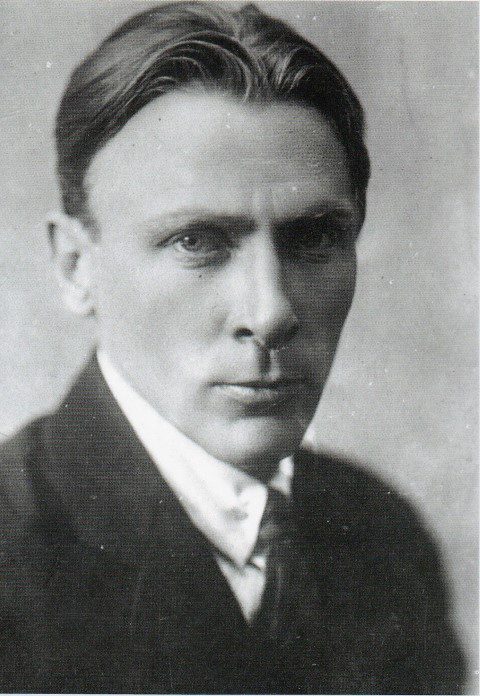Michael Bloor
United Kingdom

Anton Chechov (1860–1904) is Russia’s most famous literary doctor, but another of Russia’s great twentieth century authors also practised medicine. Mikhael Bulgakov (1891–1940) was the banned author of The Master and Marguerita, first published twenty-six years after his death, a novel credited as a progenitor of magic realism and as the inspiration of both Salmon Rushdie’s Satanic Verses and Mick Jagger’s Sympathy for the Devil. Bulgakov qualified in 1916 and at age twenty-four found himself in sole charge of a country clinic 32 miles from the nearest town, the roads to which were frequently impassable. Czarist Russia, despite its ramshackle absolutist monarchy, had a rural medical service (provided by the local government “zemstvo” councils and financed from local taxation) that many countries would envy today. Bulgakov found himself treating the local peasants, in charge of a facility with beds, an operating theatre, a staff of two midwives, and a feldsher (physician’s assistant). In the collection of short stories he wrote about his early isolation in that country clinic (A Country Doctor’s Notebook), he dwelt often on the terrors induced by the combination of total clinical responsibility and utter inexperience.
In the story “The Steel Windpipe,” he tells of the arrival at the clinic of a three year-old girl, Lidka, with diphtherial croup, close to death—her throat already choked with membrane. The mother and grandmother are appalled when he tells them (with enormous silent misgivings about his competence) that only an operation—to cut open the windpipe and insert a silver tube—will save the child’s life.
Already injected with camphor as an analgesic, the little girl was laid on the operating table by a midwife who strapped her down, washed her throat, and painted it with iodine. The surgery began:
I picked up the scalpel, still wondering what on earth I was doing. It was very quiet. With the scalpel I made a vertical incision down the swollen white throat. Not one drop of blood emerged. Again I drew the knife along the white strip which protruded beneath the split skin. Again not a trace of blood. Slowly, trying to remember the illustrations in my textbooks, I started to part the delicate tissues with the blunt probe. At once dark blood gushed from the lower end of the wound, flooding it instantly and pouring down her neck. The feldsher started to staunch it with swabs but could not stop the flow. Calling to mind everything I had seen at university, I set about clamping the edges of the wound with forceps, but this did no good either.
I went cold and my forehead broke out in a sweat. I bitterly regretted having studied medicine and having landed myself in this wilderness. In angry desperation I jabbed the forceps haphazardly into the region of the wound, snapped them shut and the flow of blood stopped immediately. We swabbed the wound with pieces of gauze; now it faced me clean and absolutely incomprehensible. There was no windpipe anywhere to be seen. This wound of mine was quite unlike any illustration. I spent the next two or three minutes poking about in the wound, first with the scalpel and then with the probe, searching for the windpipe. […] I despaired of finding it. ‘This is the end,’ I thought. […] ‘She will die with her throat slit open and I can never prove that she would have died anyway.’ The midwife wiped my brow in silence. ‘I ought to put down my scalpel and say: I don’t know what to do next’. As I thought this I pictured the mother’s eyes. I picked up the knife again and made a deep undirected slash into Lidka’s neck. The tissues parted and to my surprise the windpipe appeared before me.
‘Hooks!’ I croaked hoarsely.
The feldsher handed them to me. I pierced each side with a hook and handed one of them to him. Now I could see one thing only: the greyish ringlets of the windpipe. […] I plunged the scalpel into the trachea and then inserted a silver tube. […] Silence reigned. I could see Lidka turning blue. […] The child suddenly gave a violent convulsion, expelled a fountain of disgusting clotted matter through the tube, and the air whistled into her windpipe.
In due course, the silver tube was removed and Lidka made a full recovery. The rumour spread that Lidka had received a steel throat instead of her own and people travelled to her village just to look at her. The clinic’s practice boomed and, with around 110 patients to be seen every day, Bulgakov found himself working an eleven hour shift.
MICHAEL BLOOR, PhD, is a sociologist who worked for more than twenty years as a research scientist for the UK’s Medical Research Council. Appointed to a senior lectureship at Cardiff University, he taught sociological aspects of medicine to the medical students. He has more than two hundred academic publications. Still working part-time, his current research field is that of seafarers’ health and safety.
Highlighted in Frontispiece Volume 7, Issue 2 – Spring 2015, Highlighted Vignette Volume 13, Issue 4 – Fall 2021

Leave a Reply